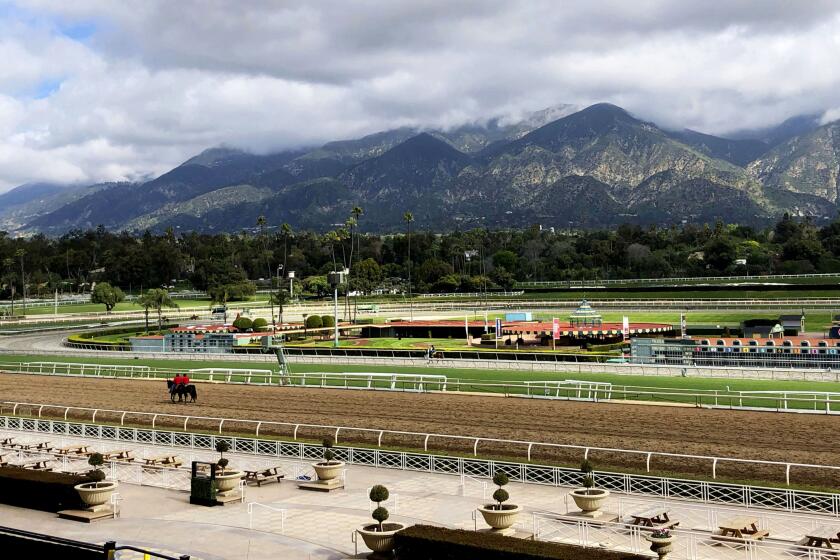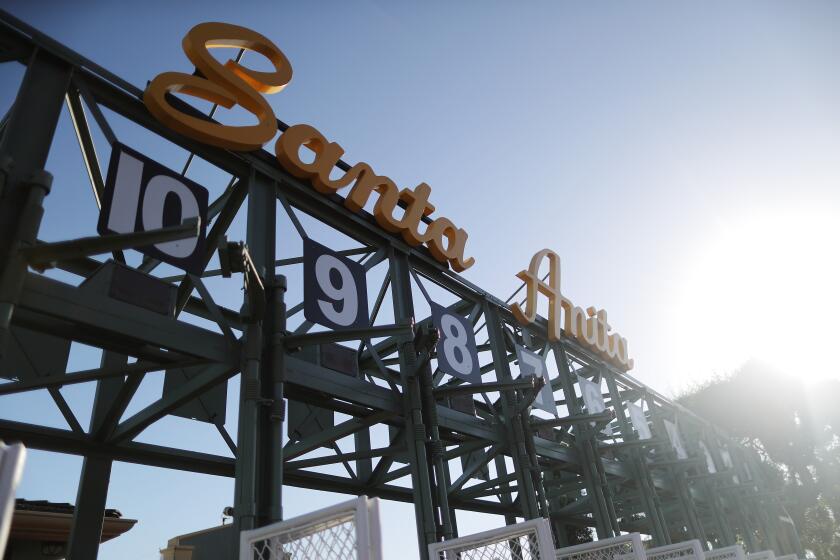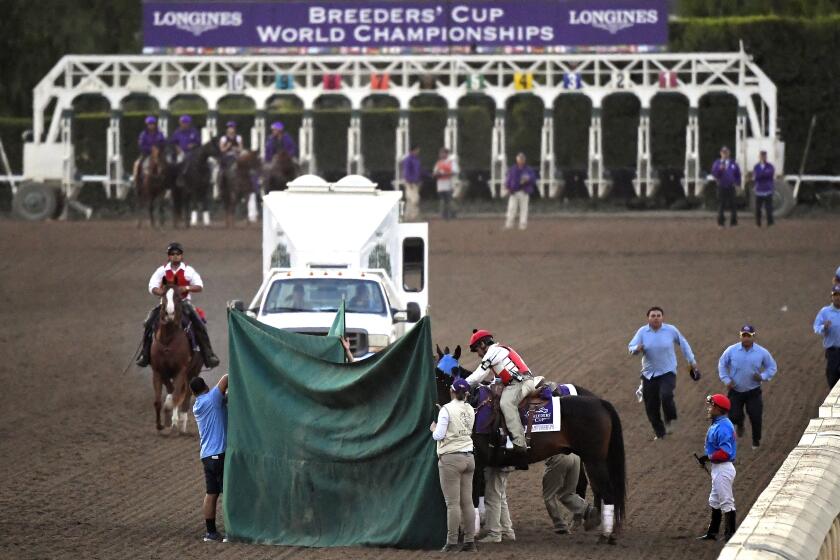News Analysis: Grim predictions as California horse racing remains at a crossroads
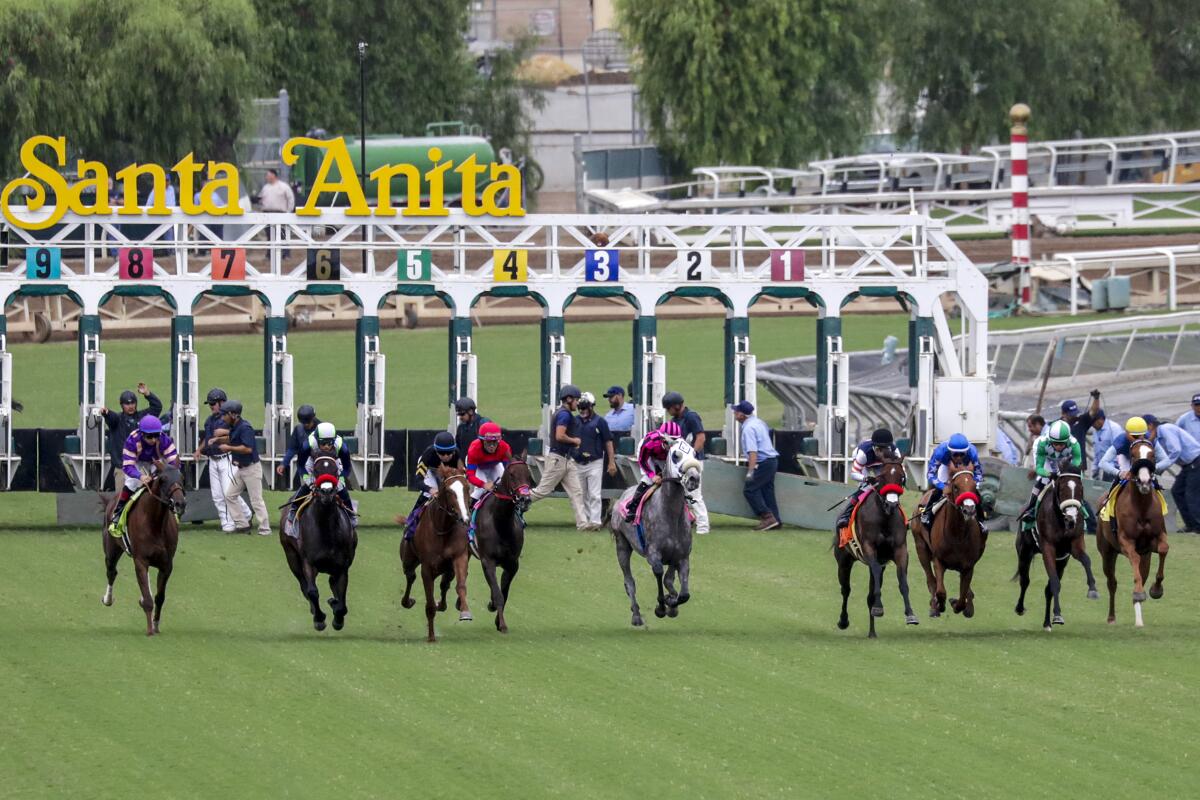
- Share via
The California Horse Racing Board was facing what could be its most consequential decision in its almost 90 years of existence. Will it try to save Northern California racing at lower odds for success and possibly putting Southern California in further peril with an outside chance it could work out for both? Or will it follow Kahneman’s Theory and make the less risk-adverse decision and sacrifice the north in order to give the south a better chance of immediate survival?
That was the question it was asked to make at Thursday’s marathon monthly meeting of the state regulatory agency in Sacramento. So, what did it do? It kicked the can down the road until March.
Despite the certainty of the agenda item for “allocation of Northern California Racing Dates … for 2024,” it was well known no decision would be made in order to give a group that is trying to save Northern California racing additional time to come up with a plan. But, it’s not a good sign when the plan is still filled with uncertainties after almost a half-year warning of this eventuality.
Commissioner Wendy Mitchell expressed the most skepticism about the outline of a plan presented by Larry Swartzlander, executive director of the California Authority of Racing Fairs.
The closure of Golden Gate Fields is just one problem California horse racing faces. Non-competitive purses and a sinking foal crop paint a tough picture.
“I don’t want to create false expectations for people that are really unattainable,” Mitchell said. “Nothing is worse than having your hopes dashed. I don’t see how all this lines up. I appreciate all the hard work and the effort. But we don’t have CalExpo, we don’t have the funding. There really isn’t a path that I see. … I’m very concerned without some outside dynamic shifting that there is the creation of unrealistic expectation.”
This issue reached the boiling point in July when The Stronach Group announced, with no input from stakeholders, that it would cease racing at Golden Gate Fields at the end of the year. It was widely viewed as a slap at racing in California. Its plan was made more clear when a TSG executive indicated it would allow another six months of racing at Golden Gate if industry groups did not oppose bill AB 1074, which would allow ADW (or betting on your phone or tablet) and simulcast revenue to be diverted to the south if there is no racing in the north. The bill passed and racing will continue at Golden Gate until June.
Commissioner Damascus Castellanos issued a stinging rebuke of how TSG handled the Golden Gate closure.
“We would be so farther along if The Stronach Group had come to us with proper notice, such as Hollywood Park and others have done,” Castellanos said. “The groups who are in this room today could have gotten together and been done with this plan. … It’s really messed up that it went down this way. The Stronach Group did not announce this to us. Let’s be real about it, it was leaked to us and it wasn’t right.”
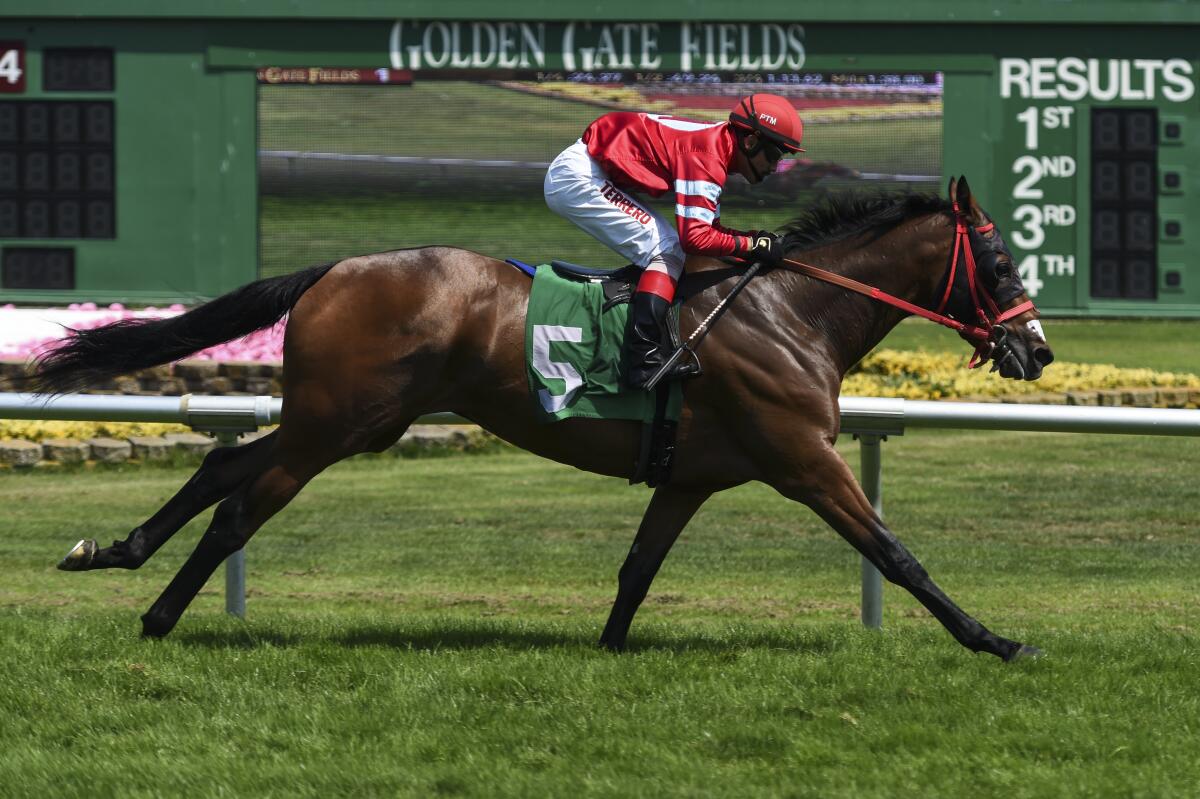
Despite early angst from the industry of the closing of Golden Gate, it appears TSG was correct in making the best business decision for itself and the survival of Santa Anita. Despite its lack of transparency, the numbers seem to bear that out.
Craig Fravel, the executive vice-chair of 1/ST Racing and Gaming, an arm of TSG, hinted at a dire future for Santa Anita without the infusion of cash to the south.
“As you can tell by the numbers, three days of racing at Santa Anita makes it virtually impossible to sustain year-round racing and training for the horse population in the south,” Fravel said.
But Northern California racing, which does not include the 13 to 15 weeks of fair racing, was put on life support. Fair racing is expected to continue in full but with fewer horses in the area, its viability might also be put in question.
The Thoroughbred Owners of California, which represents both the north and south, has not publicly stated a preference but based on its presentation on Thursday, made it clear it would prefer the north to go away to help save the south.
Transporting horses has been made more difficult as FedEx shuts down its equine shipping business for the holidays ahead of Santa Anita’s opener.
Bill Nader, chief executive of the TOC, pointed out the sobering statistics that Santa Anita entered this year with a $4 million purse overpayment. The term “overpayment” means exactly the opposite of what you might think. It actually represents the shortfall in revenue to fund purse money based on a reduction in mutuel handle, the amount of money bet on races, and other related revenue sources. He went on to point out that despite current purse cuts the purse overpayment at Santa Anita will reach between $5 million to $6 million after the first half of 2024. The purse money is always paid to owners, trainers and jockeys but at the expense of the race track.
Last year, Del Mar, considered by most standards a very successful meet, had a purse overpayment of $2.1 million. If there is no additional revenue, both Santa Anita and Del Mar will likely cut purses this year.
The revenue from the diversion of Northern California ADW and simulcast funds to Santa Anita, Del Mar and Los Alamitos would add about $8.5 million to purses, Nader told The Times. It would only stabilize the current purse structure but not increase it.
The TOC said it would support a plan for the north if it met certain high-bar criteria. It included “an increase in horse population” and “the proper funding, racing calendar, and a business plan that provides confidence and assurance to advance a sustainable California racing and breeding footprint.”
These are factors that most racing in the south could not currently meet.
The size of a race horse and its natural instincts make it nearly impossible to survive serious injuries at the track, but many are trying to improve the odds.
“Now you look to the once strong and stable south, the beautiful racetracks at Santa Anita and Del Mar and the rich history and now you see a much different picture, one of vulnerability and an increasing degree of desperation,” Nader said. “To put it another way, the north is fighting for survival and the south is literally on the ropes trying to hang on, steadily losing ground. It is not a pretty picture. The north and south are linked and they are both in trouble.”
The economics of racing is like a chain-link fence with mostly weak links. You need high purses to attract the best horses and trainers. Purses are paid mostly by the amount of money bet. Bettors like races with a lot of horses, which only come if the purses are high.
California is at a major disadvantage compared to many states that supplement racing by revenue through casino and related gambling. Purses in Kentucky, in some cases, are almost double those in California, due to support from Historical Horse Racing, essentially a slot machine disguised as a game of skill.
As for the future of California racing, come back in March and everyone will know. Maybe.
More to Read
Go beyond the scoreboard
Get the latest on L.A.'s teams in the daily Sports Report newsletter.
You may occasionally receive promotional content from the Los Angeles Times.
